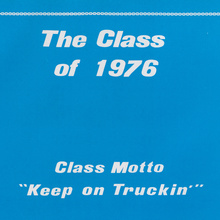Released in 1892 by the J. John Söhne foundry as Fette
Cursiv Grotesque (later spelled Fette Kursiv
Grotesk), after sketches by Johannes John, [Bauer,
Typo NZ] as an italic version of Fette Grotesque,
which was John’s name for Zeitungs-Grotesque (Francke, c. 1874). Issued soon after by Caslon/Stephenson
Blake (as Doric Italic No. 1, used for the sample), by
ATF (as Doric Italic) [Inland
Printer, Jan 1897], and by Fonderie Typographique
Française (as Washington) [JBJ]. Sold by Nebiolo as Etrusco corsivo nerissimo [1958
specimen]. In Germany, John’s design was also carried by AG f.
Schriftgießerei u. Maschinenbau (Fette
Kursiv-Groteske), Berthold, Gronau, Klinkhardt, Krebs, and
Reimann. Meyer & Schleicher in Vienna had it, too [Reynolds].
In 1926, it was still sold by AG f. Schriftgießerei u.
Maschinenbau, Bauer, Berthold, and John [Wetzig 1926–40].
Old
Gothic Bold Italic is a c.1950 revision from
Amsterdam.
Chartpak More…
Released in 1892 by the J. John Söhne foundry as Fette Cursiv Grotesque (later spelled Fette Kursiv Grotesk), after sketches by Johannes John, [Bauer, Typo NZ] as an italic version of Fette Grotesque, which was John’s name for Zeitungs-Grotesque (Francke, c. 1874). Issued soon after by Caslon/Stephenson Blake (as Doric Italic No. 1, used for the sample), by ATF (as Doric Italic) [Inland Printer, Jan 1897], and by Fonderie Typographique Française (as Washington) [JBJ]. Sold by Nebiolo as Etrusco corsivo nerissimo [1958 specimen]. In Germany, John’s design was also carried by AG f. Schriftgießerei u. Maschinenbau (Fette Kursiv-Groteske), Berthold, Gronau, Klinkhardt, Krebs, and Reimann. Meyer & Schleicher in Vienna had it, too [Reynolds]. In 1926, it was still sold by AG f. Schriftgießerei u. Maschinenbau, Bauer, Berthold, and John [Wetzig 1926–40].
Old Gothic Bold Italic is a c.1950 revision from Amsterdam.
Chartpak had a version for dry transfer lettering as Etruscan.
Digital versions include Compugraphic’s Derek Italic (Doric Italic), and a hobbyist attempt at Washington.














